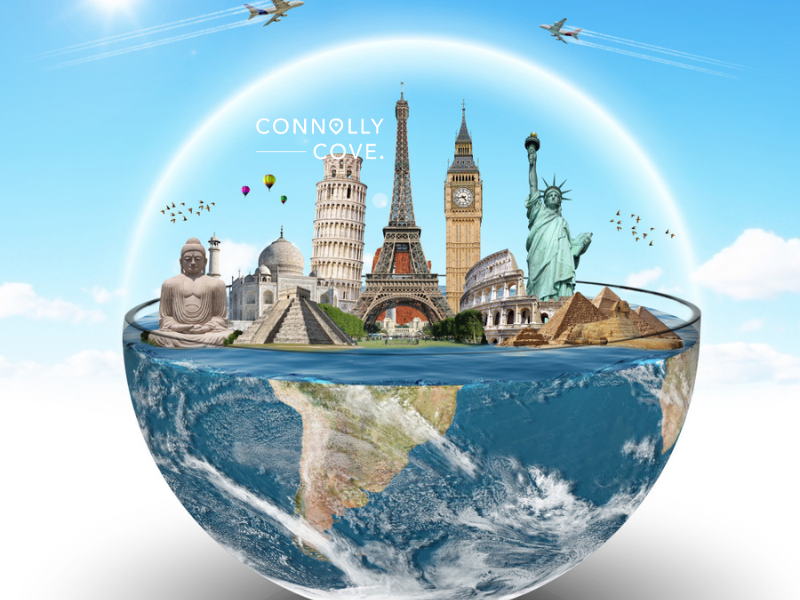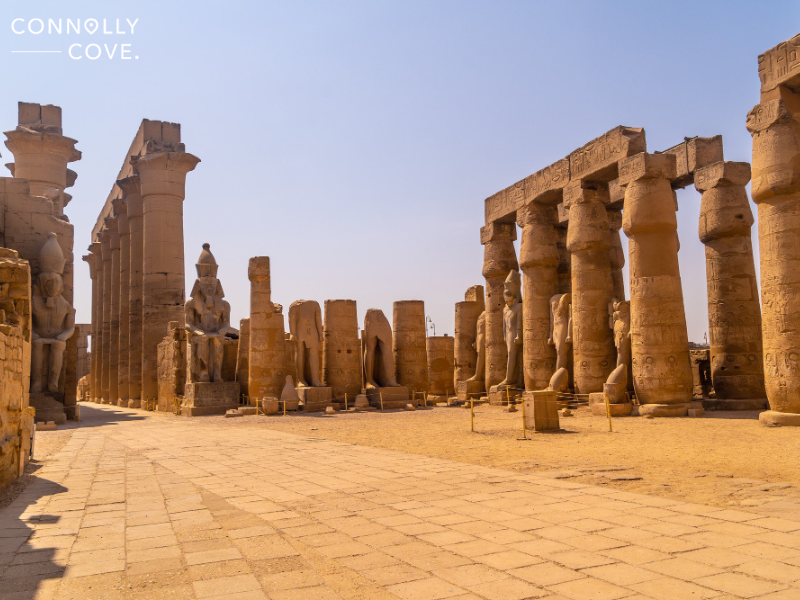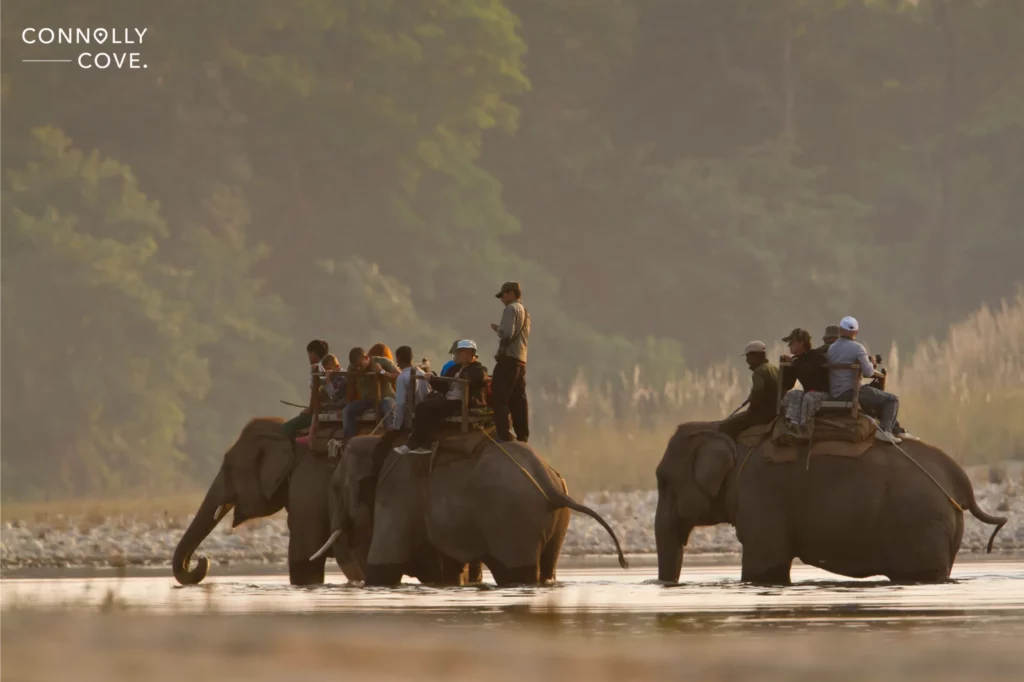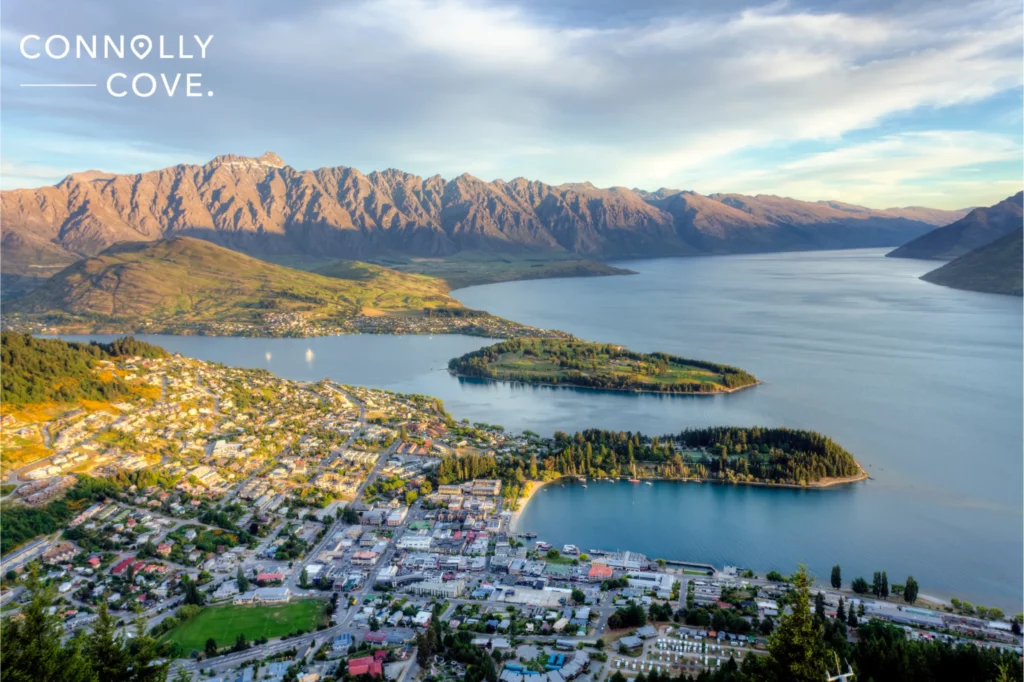5 Types of Tourism You Should Know

Updated On: April 28, 2024 by Fatma Mohamed
The types of tourism refer to the various forms of travel that people engage in for different purposes and interests. These types of tourism can range from cultural and historical tourism to adventure and ecotourism, and each type provides a unique experience for the traveller. Understanding the different types of tourism can help travellers choose the trip that best suits their interests and preferences.
Tourism is a vast and diverse industry that provides various interests and preferences. From adventure seekers to history buffs, there is a type of tourism for everyone. Here, we will explore the different types of tourism and what makes each unique. Whether you’re planning your next vacation or simply interested in learning more about the various forms of tourism, this article will provide a comprehensive overview of the most common types of tourism.
What is the Definition of Tourism?

Tourism is travelling outside of one’s usual environment for different intentions. It involves staying in hotels, resorts, or vacation rentals. Additionally, participate in sightseeing, cultural experiences, adventure, and relaxation activities. Tourism aims to experience different cultures, explore new destinations, and create memorable experiences.
Tourism is an important industry that contributes to the economic growth of many countries. It provides opportunities for employment and cultural exchange between different countries and peoples.
It’s often categorised into different types based on the purpose of travel, such as leisure, business, medical, eco, cultural tourism, and others.
Types of Tourism
There are several types of tourism, each with its unique characteristics and travellers’ interests. Let’s dive in and learn about some of these types!
1. Cultural Tourism
Cultural tourism is a type of tourism that involves travelling to experience and learn about the culture and heritage of a particular destination. This type of tourism can include visiting historical places, museums, and cultural events. These events include festivals, fairs, art galleries and celebrations. Cultural tourism allows travellers to learn about the history, traditions, and way of life of the different nations and their people. It can also promote cultural exchange and understanding between various people.

Cultural tourism can also contribute to the economic development of a destination by creating employment opportunities and generating revenue. It can also help to support sustainable tourism practices. Encouraging the conservation and preservation of cultural heritage sites and encouraging responsible tourism practices can achieve that goal. Some popular cultural tourism destinations include Egypt, Rome, Paris, Kyoto, Istanbul, and Mexico City.
Here are some examples of cultural tourism:
- Visiting historical sites: It includes landmarks and monuments such as the Pyramids of Giza in Egypt, Machu Picchu in Peru, and the Colosseum in Rome.
- Museums and art galleries: Cultural tourism can involve visiting museums and galleries to learn about a particular destination’s history, art, and culture. We can mention, for example, the Louvre Museum and the British Museum.
- Festivals and cultural events: Cultural tourism can involve participating in festivals and cultural events like the Carnival in Rio de Janeiro, the Diwali Festival in India, or the Chinese New Year celebrations in China.
- Cultural tours: Cultural tourism can include guided tours to explore the history and culture of specific spots. Examples cover walking tours of historical neighbourhoods, food tours that discover local cuisine, or cultural immersion programs that allow travellers to experience local traditions and customs.
- Performing arts: Cultural tourism can involve attending theatrical performances, music concerts, and dance performances. Examples include attending a Broadway show in New York City, a flamenco performance in Spain, or a traditional dance performance in Bali.
These are just a few examples of the many cultural tourism activities that can be enjoyed in different destinations worldwide.
2. Business Tourism
Business tourism is where individuals travel for work-related purposes rather than leisure. It includes attending conferences, trade shows, meetings, and other business—related events in different destinations.
Business tourism is an important industry that contributes to the economic growth of many countries. It provides opportunities for business travellers to network and support their products and services. It also enables them to explore the latest industry trends and developments. Business tourism also generates revenue for tourist spots by selling goods and services such as hotel accommodations, transportation, and food and beverage services.
Business tourism can be divided into several categories, including:

- Meetings: Small business meetings, such as board meetings or executive retreats.
- Incentives: This covers travel rewards for employees or sales teams who meet specific targets or goals.
- Conferences: This inserts large-scale conferences that bring together professionals from different industries to discuss and share knowledge.
- Exhibitions: This includes trade shows and exhibitions where businesses can show their products and services to potential customers.
Business tourism is a popular type of tourism, and some of the most famous destinations for business travel include New York City, London, Singapore, and Dubai.
3. Leisure Tourism
Leisure tourism is one of the most common forms where people travel to relax, enjoy, and take a break from their routine life. It includes various activities such as sightseeing, beach vacations, adventure, and cultural tourism.
Individuals, families, and groups of friends can enjoy and customise this type of tourism as it suits all interests and budgets. It covers a variety of experiences and activities depending on personal preferences.
Here are some aspects of leisure tourism:
- Relaxation and Recreation: Leisure tourism primarily aims to provide people with relaxation and recreation. It’s about taking a break from daily responsibilities and working to refresh.
- Exploration and Adventure: Leisure tourism often involves exploring new places, experiencing different cultures, or engaging in adventurous activities like hiking, skiing, or snorkelling.
- Historical and Cultural Experiences: Many leisure tourists are interested in exploring different destinations’ historical and cultural aspects, including visiting museums and historical sites and participating in local events or festivals.
- Beach and Coastal Tourism: Beaches and coastal areas are popular destinations for leisure tourism, offering a serene environment to relax, swim, sunbathe, and enjoy water sports.
- Natural Attractions: Leisure tourists often visit natural attractions like national parks, botanical gardens, and scenic landscapes to enjoy the beauty of nature.
- Entertainment: Entertainment is a significant part of leisure tourism, including visiting entertainment parks, watching shows or performances, and enjoying nightlife.
- Shopping and Culinary Experiences: Leisure travel provides an opportunity for shopping and enjoying local cuisines, which is often a delightful experience for many tourists.
Leisure tourism is a vital sector within the tourism industry. It also plays a role in encouraging cross-cultural understanding and providing a means for individuals to enrich their lives through diverse experiences and relaxation.
4. Adventure Tourism
Adventure tourism is a type of tourism that involves travelling to destinations to participate in adventurous activities. It is a form of niche tourism that is popular among adventure seekers and thrill seekers who are looking for unique and exciting experiences.
Adventure tourism can include many activities, such as hiking, trekking, mountaineering, rock climbing, bungee jumping, skydiving, and white-water rafting. It can also involve exploring remote areas and experiencing the natural environment and wildlife.
Here are examples of adventure tourism:

- Outdoor Activities: Adventure tourism often encompasses activities such as hiking, biking, skiing, rock climbing, scuba diving, white-water rafting, and zip-lining, among others.
- Natural Environments: It usually occurs in natural or wilderness settings, away from urban areas. Destinations may include mountains, forests, deserts, rivers, and oceans.
- Physical Challenges: Participants often face physical challenges that test their endurance, strength, and agility. This type of tourism appeals to those who enjoy pushing their limits and stepping outside their comfort zones.
- Exploration and Discovery: Adventure tourism encourages exploration and the discovery of new places, cultures, and experiences.
Some popular adventure tourism destinations include Nepal for trekking and mountaineering, New Zealand for bungee jumping and skydiving, Costa Rica for white-water rafting and zip-lining, and Kenya for safari tours.
Here are three cities renowned for adventure tourism

- Queenstown, New Zealand: Queenstown is often mentioned as the adventure capital of the world. It is famous for its outdoor pursuits. The city is located on the South Island of New Zealand. It offers many adventure activities, including bungee jumping, originating at the Kawarau Bridge in Queenstown. Other activities include water sports on Lake Wakatipu and Wanaka, as well as skiing during the winter months.
- Cusco, Peru: Cusco serves as a gateway for those looking to embark on the iconic Inca Trail to Machu Picchu— one of the most well-known hikes in Peru. The city also provides opportunities for ATV tours to explore the Mayan ruins at Moray and the salt mines at Maras. Cusco’s rich history and proximity to ancient ruins make it a prime destination for adventure tourism.
- Costa Rica: While not a city, Costa Rica as a country offers a myriad of adventure activities, and it’s known as the birthplace of zip-lining. Adventure travellers to Costa Rica can explore its diverse landscapes, which include jungles, beaches, and volcanoes. Backpacking through Costa Rica is a popular way to indulge in adventure tourism, and the country’s natural beauty makes it one of the world’s top places for adventure travel.
Each of these destinations is unique in its own right, offering a variety of adventure activities set against stunning natural backdrops. Typically, adventure tourists are bound to have exhilarating experiences that will leave lasting memories.
5. Medical Tourism
Medical tourism is a type of tourism that includes travelling to another country to receive medical treatment or procedures. This sector has been growing due to the potential cost savings, shorter waiting times, or access to treatments unavailable in one’s home country.
Medical tourism can include many medical procedures, such as cosmetic surgery, dental procedures, organ transplants, etc. It can also have medical check-ups, consultations, and second opinions. Medical tourism provides travellers with high-quality medical care at a low cost. Some popular medical tourism destinations include India, Thailand, Singapore, and Turkey.
Here are three countries that are renowned for medical tourism, each with its own set of advantages:
- Singapore: Singapore is often ranked high in the Medical Tourism Index due to its quality healthcare facilities and services. The country’s healthcare system is known for its robust infrastructure, high standards of medical care, and well-qualified medical professionals. Singapore’s medical tourism is also boosted by its clean and safe environment, making it an attractive place for medical tourists from around the globe.
- India: India has grown as a vital player in medical tourism, mainly known for offering high-end surgeries at relatively low costs. The country specialises in various medical procedures, including, but not limited to, cardiac surgeries, orthopaedic procedures, and cosmetic surgeries. Medical tourists often travel to India to save substantially on medical expenses, with some reports suggesting savings of around 75% compared to the costs in their home countries.
- Thailand: Thailand is a top location for medical tourism, attracting millions of medical tourists each year. The country is primarily known for its affordability, with procedures often costing 50-70% less than in Western countries. Thailand offers various medical services and is famous for cosmetic surgery, dental work, and medical wellness retreats. The country’s healthcare facilities often boast up-to-date technology and internationally accredited hospitals.
Each of these countries has created a niche in the global medical tourism sector by offering quality healthcare services, affordable pricing, and a conducive environment for recovery.
These destinations offer high-quality medical care at a portion of the cost of medical treatment in developed countries. Medical tourism can also provide economic benefits to the destination country by generating revenue, creating employment opportunities, and promoting the growth of the local healthcare industry.
The tourism industry is incredibly diverse, offering several experiences and opportunities for travellers. From cultural tourism to adventure tourism, medical tourism to beach tourism, there is a type of tourism to suit every interest and preference. Understanding the different types of tourism can help travellers choose the trip that meets their needs and desires— a relaxing beach vacation or an adventurous trek through the mountains. The tourism industry continues to improve and evolve, and it is exciting to witness what new types of tourism will emerge in the future.






